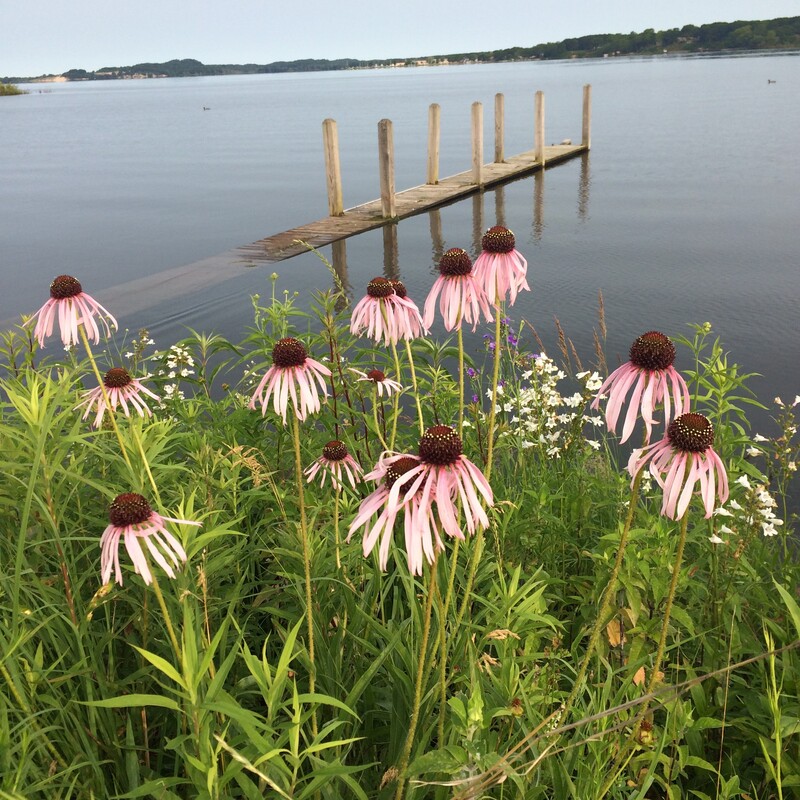|
Story and photo By Donna Iverson
Ever thought about adding some native plants to your garden as a way to help restore the natural habit of your area which has been largely lost in the past century? If so, a good place to start is by planting a native flower and a good first choice would be purple coneflower. A member of the sunflower family, purple coneflower is native to the eastern United States. Purple coneflower can be found east to New England, west to Iowa, south to the Mississippi valley and north to Ontario, Canada. In addition to being grown in gardens, it has escaped to the wild, and can be found in waste places and woods throughout Michigan. It is at home in formal gardens and wildflower meadows, and tucked along the edge of your vegetable garden. Growing 3 to 5 feet tall in any kind of soil, purple cornflower is easy to grow. This showy perennial doesn't care if it is wet soil or dry, sand or clay, poor or fertile soil. Although it will grow taller if the soil is enriched. Native plants, like the purple coneflower, require less water than cultivated flowers and do not require fertilizer or treatment with herbicides or pesticides. In fact, using herbicides and pesticides would defeat a major reason for planting native plants, which is to feed and provide habitat for pollinators. Adapted to its local environment, it is a magnet to bees, butterflies and birds. Without native plants, bees and butterflies cannot survive. To grow purple coneflower, it is best to buy seedlings as it takes two to three years for this plant to flower from seed. As for medicinal properties, purple coneflower is a member of the genus, Echinacea. Found in the vitamin aisle, Echinacea tablets are widely sold in grocery and drug stores for cold relief. But be careful, there can be allergic reactions and interference with prescription medications. Check with your doctor or pharmacist to be sure it is safe for you. Finally, if the idea of growing native plants really has your attention, check of the National Wildlife Federation website at www.nwf.org. You can enter your zip code, and get a list of the flowers that are native to you exact local. Photos are included and the site is interactive. But whether you decide to grow purple coneflower or not, notice it's beauty the next time you spot it whether hiking or taking a stroll around your neighborhood. Especially enjoy purple coneflowers majestic appearance when it has escaped to the wild.
0 Comments
Your comment will be posted after it is approved.
Leave a Reply. |
Archives
April 2024
Categories |

 RSS Feed
RSS Feed